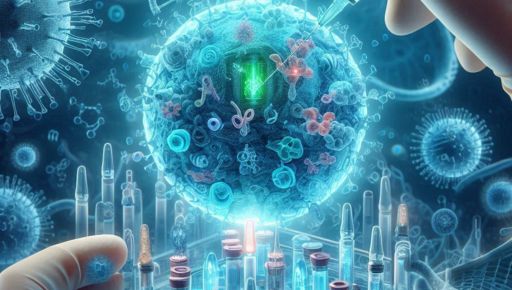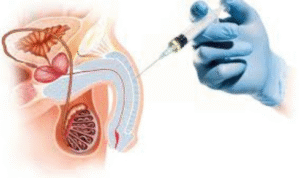The development of recombinant antibody has revolutionized biotechnology and medicine, offering targeted solutions for diagnostics, therapeutics, and research. At the heart of this innovation lies mammalian cell systems, particularly CHO cells (Chinese Hamster Ovary cells), which have emerged as the gold standard for protein expression. This article explores the critical aspects of mammalian expression systems, their role in antibody expression, and why CHO cells dominate the industry.
Recombinant Antibodies: A Breakthrough in Biotechnology
Recombinant antibodies are engineered proteins designed to bind specific antigens with high precision. Unlike polyclonal or monoclonal antibodies produced using traditional hybridoma techniques, recombinant antibodies are synthesized using advanced genetic engineering methods.
This process begins with the identification of the antibody gene sequences that encode the desired binding specificity. These genes are then cloned into vectors and introduced into host cells, often mammalian cells, to facilitate protein expression.
Key Applications of Recombinant Antibodies:
- Therapeutics: Treatments for cancers, autoimmune diseases, and infectious diseases.
- Diagnostics: Detection of biomarkers in diseases.
- Research: Tools for studying molecular pathways and mechanisms.
The ability to produce large quantities of recombinant antibodies with consistent quality is critical for these applications, making the choice of expression system crucial.
The Role of Mammalian Cells in Protein Expression
Mammalian expression systems are widely preferred for producing recombinant proteins, especially therapeutic antibodies. This preference stems from their ability to perform complex post-translational modifications, such as glycosylation, which are essential for the functionality and stability of many proteins.
Advantages of Mammalian Cells in Protein Expression:
- Accurate Folding: Mammalian cells ensure proper protein folding, which is vital for biological activity.
- Post-Translational Modifications: They produce proteins with human-like glycosylation patterns.
- High Protein Yield: Optimized systems can generate large amounts of recombinant proteins.
Compared to bacterial or yeast systems, mammalian cells are better equipped to produce biologically active, therapeutic-grade antibodies.
CHO Cells: The Industry Standard
Among mammalian cell lines, CHO cells have become the workhorse of the biopharmaceutical industry. These cells offer a unique combination of productivity, adaptability, and safety, making them ideal for large-scale antibody expression.
Why Are CHO Cells Preferred?
- Scalability: CHO cells grow well in suspension cultures, enabling high-density cultures for industrial production.
- Post-Translational Modifications: They perform glycosylation patterns similar to human cells, ensuring the efficacy of therapeutic antibodies.
- Regulatory Acceptance: CHO cells have a long history of regulatory approval, which simplifies the pathway for new therapeutics.
- Genetic Stability: CHO cells maintain stable protein expression over time, even under large-scale conditions.
CHO cells’ versatility makes them suitable for producing not only recombinant antibodies but also a wide range of other therapeutic proteins.
Optimizing Protein Expression in Mammalian Systems
The efficiency of protein expression in mammalian cells, including CHO cells, depends on multiple factors. Careful optimization is necessary to maximize yield and ensure product quality.
Key Factors Influencing Mammalian Expression:
- Vector Design: The expression vector must include strong promoters, enhancers, and regulatory elements to drive high levels of transcription.
- Cell Line Development: Stable cell lines are developed through genetic engineering and selection for high-yield clones.
- Culture Conditions: Optimized media, supplements, and feeding strategies enhance cell growth and productivity.
- Process Control: Precise control of parameters such as pH, temperature, and oxygen levels ensures consistent protein quality.
Advanced techniques, such as transient transfection and gene editing, further enhance the capabilities of mammalian expression systems.
Antibody Expression: Challenges and Solutions
Producing recombinant antibodies involves unique challenges, such as achieving high titers, maintaining consistency, and reducing production costs. Addressing these challenges requires continuous innovation in both upstream and downstream processes.
Challenges in Antibody Expression:
- Low Yield: Achieving sufficient antibody concentrations can be difficult in certain systems.
- Glycosylation Variability: Variations in glycosylation can affect the therapeutic efficacy and safety of antibodies.
- High Costs: The complexity of mammalian systems leads to higher production costs compared to microbial systems.
Innovative Solutions:
- Cell Engineering: Modifying CHO cells to enhance productivity and glycosylation accuracy.
- Media Optimization: Developing chemically defined media to improve yields and reduce costs.
- Process Intensification: Using techniques like perfusion culture to increase cell density and productivity.
These advancements ensure that antibody expression continues to meet the growing demand for high-quality biotherapeutics.
Future Perspectives in Mammalian Expression Systems
The future of recombinant antibody production lies in further improving mammalian cell systems. Emerging technologies, such as CRISPR-Cas9 for precise genome editing and artificial intelligence for process optimization, hold immense promise.
Trends to Watch:
- Personalized Antibodies: Tailoring antibodies for individual patients using rapid manufacturing techniques.
- Synthetic Biology: Designing synthetic mammalian systems for enhanced protein production.
- Automation and AI: Automating workflows to increase efficiency and reduce costs.
As the demand for therapeutic antibodies continues to rise, innovations in mammalian expression systems, especially involving CHO cells, will play a pivotal role in meeting global healthcare needs.
Conclusion
The integration of recombinant antibody production with mammalian cell systems has transformed the biopharmaceutical landscape. CHO cells stand out as the cornerstone of this progress, offering unparalleled advantages in protein expression and scalability. Despite challenges, ongoing innovations in mammalian expression systems promise a future where therapeutic antibodies are more accessible and affordable, benefiting millions worldwide.
By leveraging the full potential of CHO cells and optimizing antibody expression, researchers and manufacturers can continue to unlock new possibilities in biotechnology and medicine.





